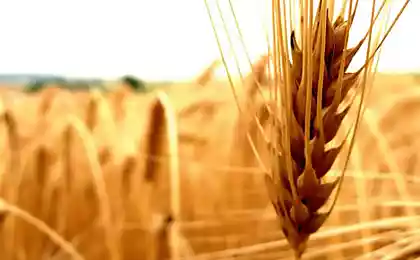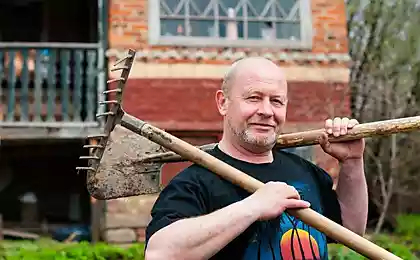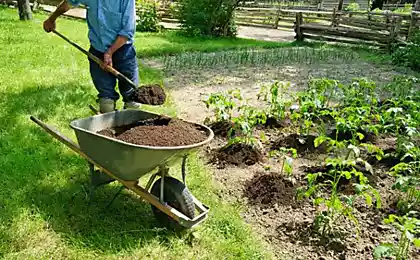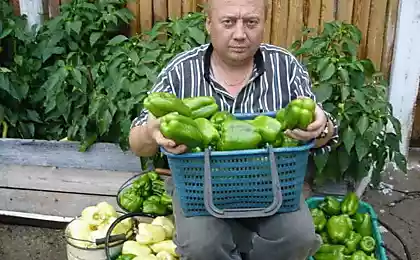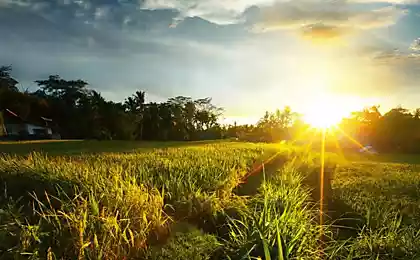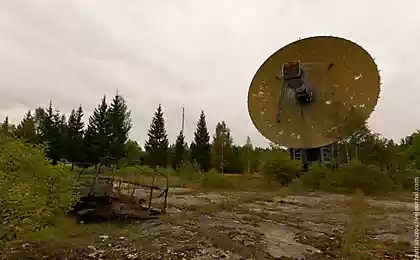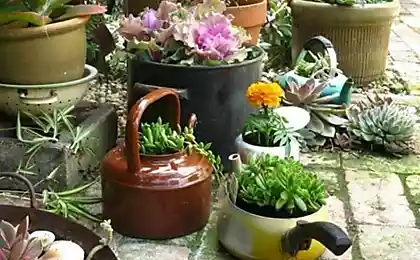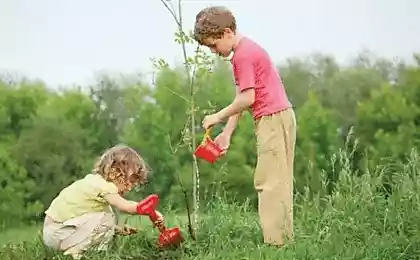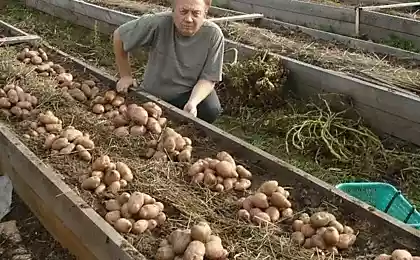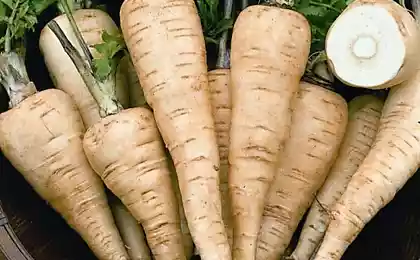525
Why is it better to abandon the digging-digging
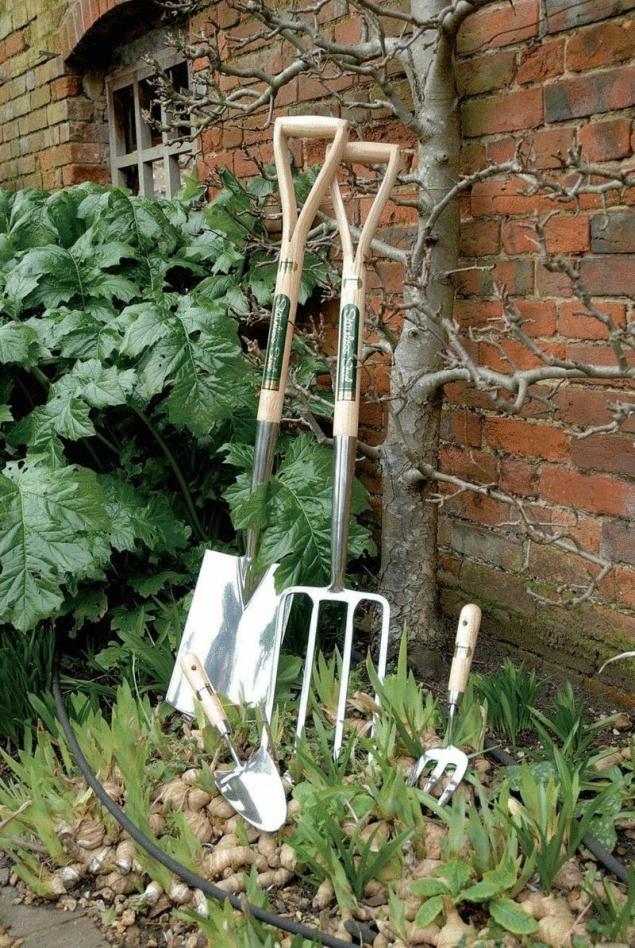
It's been five full years since I abandoned the digging of the plot and fall, and spring.
Do not get tired to rejoice the changes in the soil. Its appearance, composition, structure, population of different animals telling me that she was alive and healthy.
I dread to think what it was five years ago: in comparison with the neighboring black areas of my garden was red and the air with dust at the slightest attempt to handle it (effect of the laying water and gas pipes along the entire section and annual deep tillage).
When the ground becomes soil
After the rejection of the annual ploughing, digging and receiving the first results the euphoria was so strong that I immediately wrote about it in "the Woman" to not only me, but other gardeners-gardeners could get "high" from working with the earth. Many assured me that everything good for a while, that the garden will become overgrown with weeds that the earth will soon turn into "asphalt", etc. etc. But it's been 5 years, the results are all new and good, and the soil in the area I'm happy to now call soil.
The euphoria has not passed, it only strengthened. Heavy earthworks, which were repeated every spring, are gone. The most popular tools is ploskorez Fokine and light rake. The shovel replaced the usual small, like a scoop, and from choppers abandoned altogether. The most important thing I've learned over these 5 years is that the soil needs to be airy and loose, it should be firm, have good structure and be sure to mulch on top. Then it's living soil, is capable to yield a harvest in any weather conditions.
The dry summer of last year showed that deep tillage dries it, leaving the reserves of moisture that plants can take from the lower horizons. High temperatures throughout the summer after a wet spring triggered "cementing" plowed soil layer and the formation of crusts with deep cracks. I watched it personally on neighboring sites. And my copany plot did not show any cracks. After each of the long-awaited rain, I took up a rake and had a "dry watering" – raked to a depth of 2-4 cm was playing the role of a mulch, and saved the soil from drying out. Of course, water had especially the cabbage but without watering the plants felt much better than in neighboring areas. The leaves completely cover the earth from the sun, and watering is needed more in order to humidify the air.
From lack of moisture suffered and potato planting, as it is they, as a rule, the most remote place don't always stretch hose for watering. But dug the harvest "he said" for himself in favor of processing the soil without digging. The number was less than half full, but the potatoes were surprisingly large and clean, with no traces of disease.
Drought predicted... moles
A special place, the Sunny and fertile, always allocate the tomatoes. Last summer they had a very good mulch to protect from extremes of day and night temperatures (the cause of the cracking of the fruit). In the course went with weed strawberry plantations the weeds and specially grown phacelia. By the way, I love this bushy grass and the appearance is beautiful and rich in protein (to feed animals), and grows quickly after mowing (it is profitable to grow specifically for mulch and green manure for the winter is better than mustard as it creates a more dense, elevated above the ground covering.
When high daytime temperatures not to trigger fruit cracking, and I for the whole growing season gave the tomatoes only two or three of watering. Naturally, the growth of tall varieties was reduced, but the harvest has not decreased: render focused on the harvest.
When transplanting from the greenhouse into the ground I just left some "zero" coming from the root laterals. Accurate forecast for a dry summer gave the moles (by the way they do it annually). Look at the mounds of earth, thrown underground residents in early spring.
If the mounds "go" up the hill, the wet summer is expected, and if it is down it is dry.
The mounds of the latter, a little darker, wetter, so you can guess the direction of the turn. This tip I use for many years and never made a mistake.
Not to tie each tomato plant separately, I stretched polyvinyl chloride (PVC) tape, "eight" curve pegs hammered between the bushes of plants. Tape stretching had twice over the summer, the bushes didn't fall, the tape is firmly gripped them.
New – well forgotten old
I want to say a few words about the method of planting seedlings, which were used by our grandfathers and great-grandfathers, but generally forgotten by modern gardeners, using deep tillage. I am a second year in a row planted cabbage seedlings "under the peg". In a slightly razvorotnoj the garden with a crowbar, make a hole to a depth the length of the roots, then throw the root of the seedling to "heart" and poured water from a watering can without a nozzle. The soil from the edges of the hole under running water to rinse down silting roots. All planting is finished. In addition, all operations are flow, and the entire landing takes a minimum of time. Planted seedlings accepted immediately, not perevarivaya.
If the soil around the plants loosened to a depth of 2-3 cm, and water several times is not necessary, as the fit under the "crowbar" does not violate the inflow capillary moisture from lower horizons, and the roots get it right in abundance.
In this way it is possible to plant purchased seedlings of all crops: although the roots of it, as a rule, half-ragged, but the plants take root quickly. For your seedlings, planted with a lump of compost, I shovel dig a small hole the size of the coma (no more!), put the seedling, half covered with soil, watered and covered completely, forming a garden round. On top of already not water. Landing, of course, harder than usual, but the harvest is always worth the costs. Besides, the soil can greatly enrich an annual contribution connected with the roots of the humus, (i.e. working!) at a depth of planting. Not to destroy whom when planting, in the greenhouse humus penetrate the entire length and breadth between plants. Obtain smooth cubes with seedlings, which transplant.
Mulch and more mulch
The dry summer of 2010 demonstrated that mulch the soil as necessary as air and water because without it, soil can be neither one nor the other. A mulch can be different. My experience tells me that for planted seedlings and seedlings with roots a good mulch is any organic matter, forming a thick layer around the plant. But for fast rooting of cuttings that need frequent watering, better suited mulch of river coarse sand, pour a layer of 5-7 cm In this case, any drop of water falls through the sand to the cuttings, flows down, and the roots are formed quickly. Organic mulch is simply impossible, because as long as she doesn't get wet – the moisture down to nil. In case no organic matter, no sand on the bed of the role mulch can play even loosened with a rake at 2-3 cm soil. She dries herself, but will not give too dry root zone layer. Last year's drought forced all soil inhabitants to withdraw into the deeper layers of the soil, and even mulch in all its forms lay everywhere.
In the garden a good mulch is podkashivatsya occasionally the lawn. Only grass clippings don't need to remove it all, "where necessary", to pull the worms. And perepev, it will give nutrition to the roots. In addition, the turf – shelter sanitation garden (ladybirds, riders, etc.) Aphids on my site itself is almost all gone, with her I have not struggling, no suffering. With the formation of the lawn disappeared scab on Apple and pears, mildew on grapes, although additional treatments I didn't spend. Yes it looks green lawn is more fun and more attractive than black dug the garden, where you can enter only in dry weather.
What scares us?
In the classroom our Kursk gardeners club I lectured on "the Treatment of the soil without digging", talked to a lot and realized that to give up digging-digging people stops the desire to "save the earth", not to lose the crop. Almost all the farmers believe that a large number of paths will adversely affect the crop. But after all, as they say, is in our hands. You can build beds of all shapes and sizes, and paths between them to make any width, as long as it was convenient to walk through the area without stepping on the beds. Not trampled the ground at once will reward you with a harvest.
Second, that prevents escape from digging is the fear of the dominance of weeds. But the weeds don't come from nowhere, their seeds lie in the ground throughout the depth of the processed layer, while maintaining a high germination and energy of germination. During long-term storage "aspiration" to produce offspring of weeds significantly increased. Not worth the trouble to imagine what happens when we use the digging overturn the earth. All the seeds that turned into the light of God, strive to grow and produce offspring.
If to treat only the top layer of the soil, "spiva" ploskorez grown weeds, the new take is simply nowhere (talking about annual weeds with a taproot).
Third, what makes you keep digging is the apparent difficulty in the remaking of the backyard and the device ridges. By experience, it only seems complicated, but really is just ridiculously tedious.
First step is the hardest
Starting to make their beds, I said to myself: "the eyes fear, the hands do", and a week later, all 20 acres were sliced apart on the beds and paths. First, along the garden trampled flat track, to be able to have a car to drive up to any place. Then set out the direction of the ridge, took a plane and went... With the first path being inclined to the length of the handle of the cultivator, made skirting along one side of the ridge, then the same on the other side. The resulting path started to do the second patch, etc.
Having 2-3 beds, picked up a rake and leveled the surface, leaving small ledges. The newly created patch dries very quickly, but this fear is not necessary, it is only an appearance. Dry only the top 3-5 cm, and deeper – wringing. And as a result the excellent germination of seeds of carrots, onions and all those crops whose seeds are sown in the spring.
Making the beds, don't forget to sketch in his selhoztehnika, then to plan your already very accurate rotation.
A sow for such beds can be everything culture. Even carrots, beets, fodder beetroot, potatoes, etc., etc. all without deep digging in the fall and cultivation in spring. In the first year after harvest, you can sow a green manure (mustard, phacelia or fenugreek) in order that the soil gets its nutrition and a blanket in the winter. Then in the spring of next year you will not recognize your site. The soil in the beds will breathe, it will become light and soft, and you forget what "hairy" carrots.
Why am I writing all this? In order to convey to every workaholic -. - thought: work can and should be not a burden but a joy. Then out in the garden or in the garden will want in any weather and not only to work but to just walk, to breathe the earth, and to rejoice in the works of their hands. And not only have you enjoyed being in his garden, but also your relatives, looking at you happy. Everyone heartily wish you good health and rich harvest.published
Author: Marina Protasov
P. S. And remember, only by changing their consumption — together we change the world! ©
Source: vk.com/pervorod?w=wall-48124846_30412
